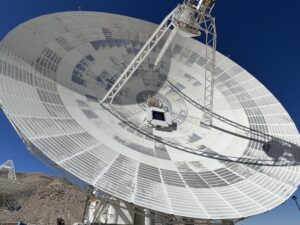
While there is no risk of 2008 OS7 hitting Earth anytime soon, there is a very real concern that some other as-yet-undiscovered asteroid could be out there on an orbit that will collide with Earth and try to do to humanity what a past asteroid did to dinosaurs.
Currently, the only system on Earth focused on watching for that killer asteroid is the Goldstone Solar System Radar.
But maybe, just maybe, that is about to change. National Radio Astronomy Observatory-associated researchers presented their latest radar results at a February 17 meeting of the American Association for the Advancement of Science. Alongside their latest science, they also discussed plans for the Greenbank Radio Telescope to develop next-generation radar capacity. These new systems will allow higher-resolution observations for science and planetary defense. In initial tests, they were able to use low-power transmitters that put out less energy than a standard microwave to achieve the highest-resolution lunar maps ever taken from Earth. This was just a trial, and it’s hoped that more powerful future systems will be able to see further and better thanks to increased power.
This allowed them to lure me into reading their press release with talk of someday using this system to watch the skies for rocks the way military installations watch the skies for more human enemies. The Greenbank Radio Telescope is fully steerable and can see 85% of the Earth’s sky from its West Virginia location. It just might be that one day it will be a radar ping that alerts us to some hidden object headed our way.
And if all goes to plan, we’ll do a better job diverting that rock than has so far been depicted in the movies. Imagine a future where a potential civilization-ending asteroid is casually pushed away because it is detected early enough and we have prepared enough that protecting the planet is just another day of doing science. That is the future we want.
